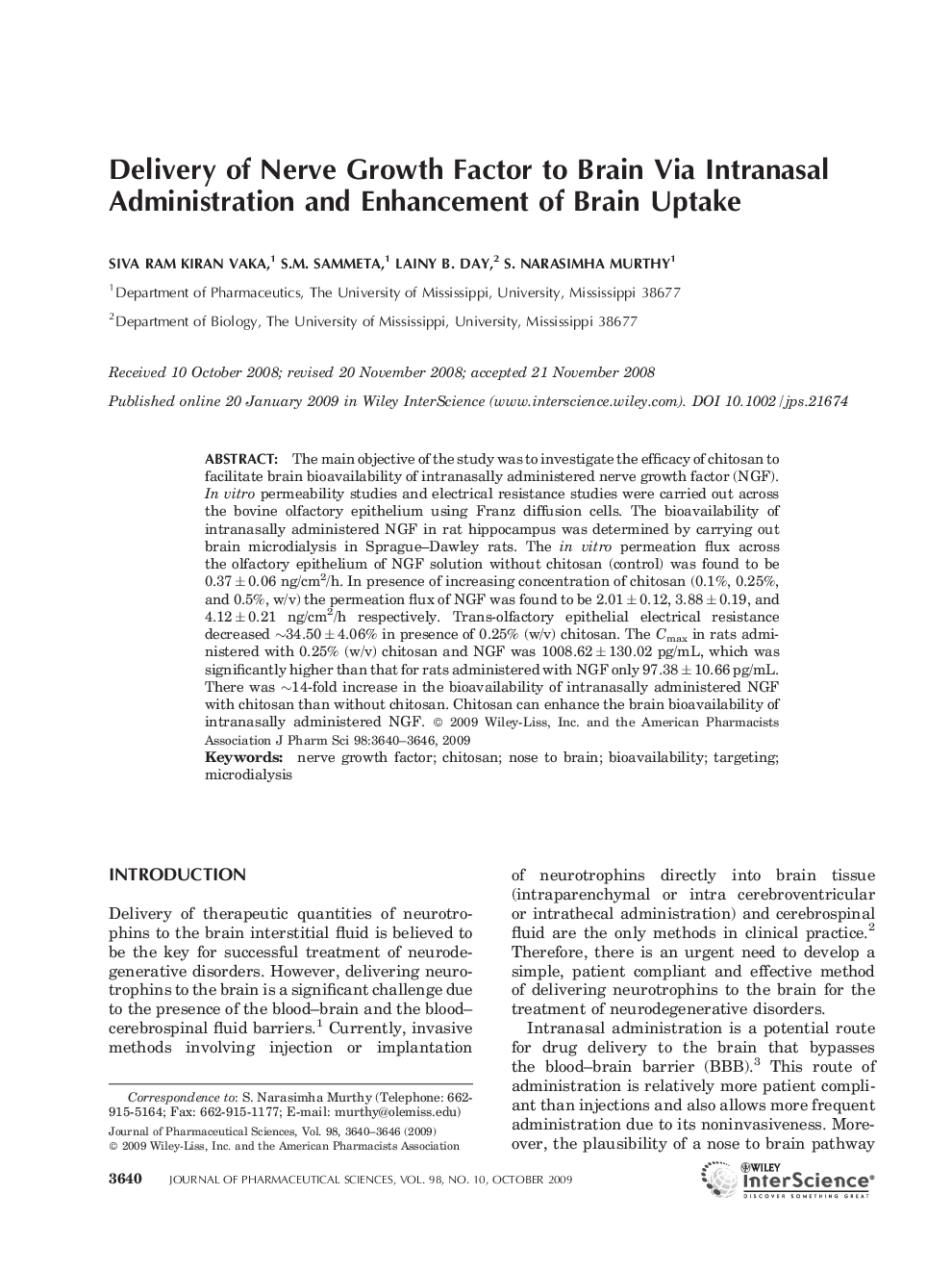| Article ID | Journal | Published Year | Pages | File Type |
|---|---|---|---|---|
| 2486385 | Journal of Pharmaceutical Sciences | 2009 | 7 Pages |
Abstract
The main objective of the study was to investigate the efficacy of chitosan to facilitate brain bioavailability of intranasally administered nerve growth factor (NGF). In vitro permeability studies and electrical resistance studies were carried out across the bovine olfactory epithelium using Franz diffusion cells. The bioavailability of intranasally administered NGF in rat hippocampus was determined by carrying out brain microdialysis in Sprague-Dawley rats. The in vitro permeation flux across the olfactory epithelium of NGF solution without chitosan (control) was found to be 0.37 ± 0.06 ng/cm2/h. In presence of increasing concentration of chitosan (0.1%, 0.25%, and 0.5%, w/v) the permeation flux of NGF was found to be 2.01 ± 0.12, 3.88 ± 0.19, and 4.12 ± 0.21 ng/cm2/h respectively. Trans-olfactory epithelial electrical resistance decreased â¼34.50 ± 4.06% in presence of 0.25% (w/v) chitosan. The Cmax in rats administered with 0.25% (w/v) chitosan and NGF was 1008.62 ± 130.02 pg/mL, which was significantly higher than that for rats administered with NGF only 97.38 ± 10.66 pg/mL. There was â¼14-fold increase in the bioavailability of intranasally administered NGF with chitosan than without chitosan. Chitosan can enhance the brain bioavailability of intranasally administered NGF. © 2009 Wiley-Liss, Inc. and the American Pharmacists Association J Pharm Sci 98:3640-3646, 2009
Related Topics
Health Sciences
Pharmacology, Toxicology and Pharmaceutical Science
Drug Discovery
Authors
Siva Ram Kiran Vaka, S.M. Sammeta, Lainy B. Day, S. Narasimha Murthy,
